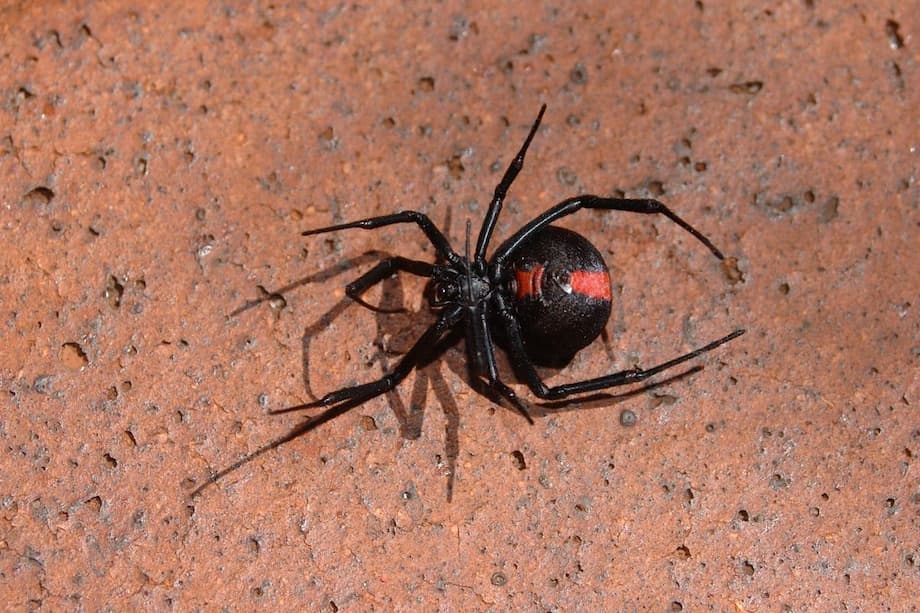An alert that put a spotlight on safety at Osaka Expo
Organizers of the Osaka Kansai Expo 2025 issued a safety alert after a nest of redback spiders was discovered on a table used by visitors on September 9. The find prompted staff to expand site wide checks and urge guests to report any sightings. Since April, more than 70 redbacks have been detected in non public work zones. Extermination teams are on site and continue to remove spiders and egg sacs where they are found. The association that runs the Expo has asked visitors to avoid touching any spider and to seek assistance from staff.
- An alert that put a spotlight on safety at Osaka Expo
- What happened at the Expo site
- How dangerous are redback spiders
- Where did they come from and how common are they in Japan
- What visitors should do at the venue
- A fair already under scrutiny
- How the site is fighting the spiders
- What to do if you are bitten
- What to Know
Officials describe redbacks as venomous but generally timid. Females are easy to identify, with a jet black body and a vivid red stripe along the abdomen, sometimes with an orange or hourglass marking underneath. Males are far smaller and mottled. The spiders tend to shelter in undisturbed places such as the undersides of outdoor furniture, inside crevices near steps, and under the edges of benches or railings. The warning arrives after other recent strains on the event, including bomb scares and brief power outages, which have kept attention on safety and operations at the site on Yumeshima island in Osaka Bay.
Expo organizers say the fairgrounds remain open. Staff have been briefed to respond quickly to reports, and pest control teams have eliminated specimens in restricted areas. Osaka Governor Hirofumi Yoshimura has urged vigilance, noting that redbacks are established across the prefecture. The recommendation for visitors is straightforward: do not touch spiders, notify staff promptly, and watch where you place hands and bags when you sit or rest.
What happened at the Expo site
The Japan Association for the 2025 World Exposition reported that a cluster of eggs was found on a table accessible to visitors, which triggered the public alert. Until then, most detections since April had occurred in back of house areas, away from the public. Exterminators have been hired, and spot treatments and removal are ongoing. Organizers emphasize that the spiders have been reported across Osaka Prefecture for years, so the alert is precautionary and focused on behavior that prevents contact.
In an online notice, the association asked visitors to avoid interacting with spiders and to alert staff if they see one. The message was clear and practical.
“Please do not try to catch it with your bare hands or touch it.”
The same notice also explained why the bite risk is low for people who do not handle the animals.
“Their fangs are short, so it is unlikely that you will be bitten unless you catch one with your bare hands or accidentally touch it without noticing it.”
Organizers say contractors are surveying typical harborages around public seating, the bottoms and backs of tables, the frames of temporary structures, and utility gaps. Where spiders or egg sacs are found, they are removed and the area is treated. Guests who want to read the full guidance can consult the official Expo notice online at this link.
How dangerous are redback spiders
Redbacks (Latrodectus hasselti), a close relative of the black widow, carry a neurotoxic venom. Health officials in Osaka say the spiders are not aggressive and tend to bite only when pressed against the skin or grabbed. When bites do occur, the first sensation is often a sharp prick, similar to a needle. Pain can spread from the bite site through a limb or across the body. Some patients report chills, sweating, nausea, headache, and muscle aches. Severe complications are rare, but infants, older adults, and people with underlying conditions can be more vulnerable and should seek prompt care.
Authorities advise simple first aid. Rinse the bite with clean water and keep the affected limb as still as possible. Apply a cold pack wrapped in cloth to help with pain and swelling. Do not apply a tight tourniquet. Seek medical attention, especially if there is spreading pain, sweating, nausea, or any sign of breathing difficulty. On site medical teams can assess symptoms and refer patients to hospital care if needed.
Where did they come from and how common are they in Japan
Redbacks are native to Australia. They are believed to have arrived in Japan in the 1990s hidden in cargo and containers. The first confirmed case in Osaka dates to 1995 at the Port of Osaka. From initial footholds near ports, they have spread widely. Surveys and local reports indicate that redbacks have been detected in 45 of Japan’s 47 prefectures. Osaka officials say they are present across the prefecture, including urban districts. The species prefers warm, sheltered spots and is most active from spring through late autumn. During colder months, they seek warmth in protected structures.
Recent figures from western Japan underscore their reach. At the US Marine Corps Air Station Iwakuni, authorities reported exterminating 921 venomous spiders, including redbacks, between April and July 2025, more than double the count over the same period a year earlier. While most people will never encounter a redback in daily life, the numbers show why public venues build controls and checks into routine maintenance, especially in hot weather when spiders are more active.
What visitors should do at the venue
Good habits reduce risk and help staff respond fast. Expo organizers and local health officials offer simple guidance that is easy to follow during a day at the fairgrounds.
- Do not touch or attempt to capture any spider. Step back and alert the nearest staff member.
- Report the exact location. Point to a fixed object nearby to help staff find it quickly, such as a pavilion entrance sign, a bench number, or a trash receptacle.
- Watch where you place hands and bags when sitting at outdoor tables, leaning on railings, or resting on low walls.
- Before you leave a seating area, check under the table edge and the chair seat if possible.
- Wear closed shoes and avoid leaving clothing or towels on the ground.
- Teach children not to touch spiders and to call an adult or staff member if they see one.
- If bitten, rinse the area with water and go to the nearest medical station or contact emergency services.
A fair already under scrutiny
The redback alert lands amid a busy stretch for Expo planners. The seven month event has contended with bomb scares and short power interruptions. Transportation capacity, summer heat, and crowd control have drawn public discussion since before opening. Osaka Metro boosted trains to the Yumeshima station to manage flows, and buses ferry people from rail hubs, but staffing and crowding remain watch points during peak hours. Teachers and parents escorting children are being asked to keep groups together on narrow platforms.
Weather and the bay setting add complexity. Summer brings high heat and thunderstorms. Open air queues and long walks in direct sun can strain visitors, especially children and older adults. Areas with water and greenery can attract mosquitoes in warm months. Osaka’s reclaimed land and port infrastructure bring steady monitoring of invasive species such as fire ants and redbacks. City agencies and Expo staff coordinate on vector control and inspections as the season shifts into autumn.
How the site is fighting the spiders
Large venues use a mix of surveillance, removal, and targeted treatments to keep pests under control. At the Expo, contractors and staff are inspecting likely harborages around seating, service corridors, cable runs, storage niches, and the undersides of structures. When spiders or egg sacs are found, they are removed and the surrounding area is treated. Nighttime inspections with flashlights help spot webs where foot traffic is lower.
Good housekeeping reduces spider habitat. Teams clear clutter where possible, tidy storage, and seal small entry points where utilities pass through structures. Trash is collected frequently to limit insects that serve as spider prey. Staff and vendors receive briefings on what to watch for and how to report finds. The approach is iterative, since outdoor environments are dynamic and redbacks can reappear even after successful removal in one corner of a site.
What to do if you are bitten
Medical guidance from local authorities centers on calm, basic first aid, and prompt evaluation when symptoms spread or worsen.
- Move to a safe area and stay calm. Reassure children and keep them still.
- Rinse the bite with clean water. Do not cut the skin or try to suck out venom.
- Apply a cold pack wrapped in a cloth for pain and swelling. Avoid applying ice directly to skin.
- Keep the affected limb as still as possible while you seek medical help.
- Go to a medical station on site or the nearest clinic. Call emergency services if there is severe pain, sweating, nausea, trouble breathing, or faintness.
- If a safe photo can be taken without touching the spider, show it to medical staff. Do not attempt to capture the animal.
What to Know
- A redback spider nest with eggs was found on a visitor table at Osaka Expo on September 9, prompting a public alert.
- More than 70 redbacks have been detected in non public areas since April, and contractors are removing them.
- Organizers advise guests not to touch spiders and to report sightings to staff for removal.
- Health officials say redbacks are not aggressive and bites are uncommon unless a spider is pressed or handled.
- Typical bite symptoms include sharp localized pain that can spread, with chills, sweating, and nausea in some cases.
- First aid includes rinsing with water, applying a cold pack, keeping the limb still, and seeking medical attention.
- Redbacks, native to Australia, were first found in Osaka in 1995 and are now reported across most of Japan.
- The Expo remains open and has expanded inspections and pest control around public seating and structures.




